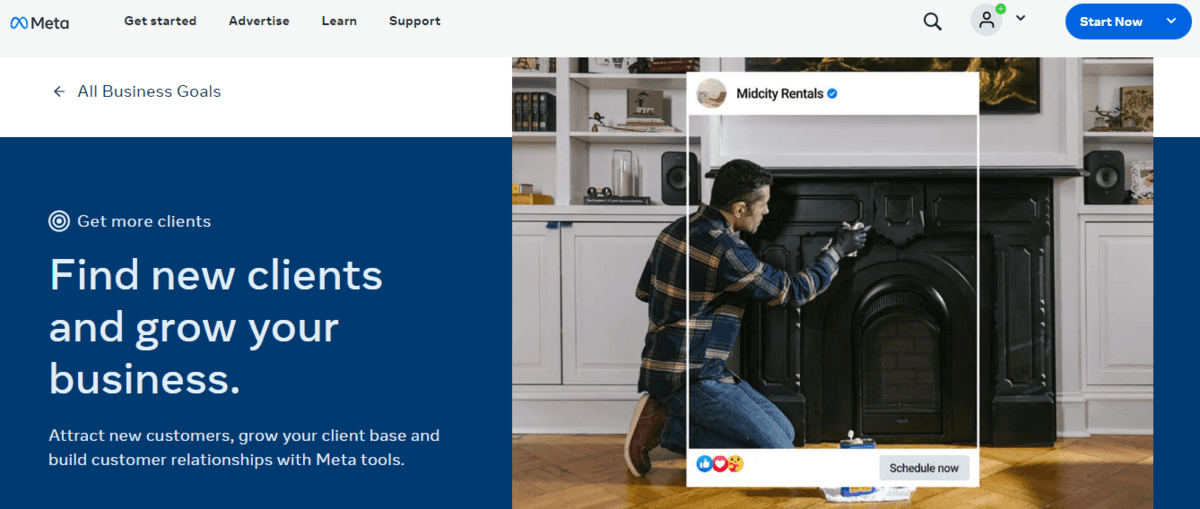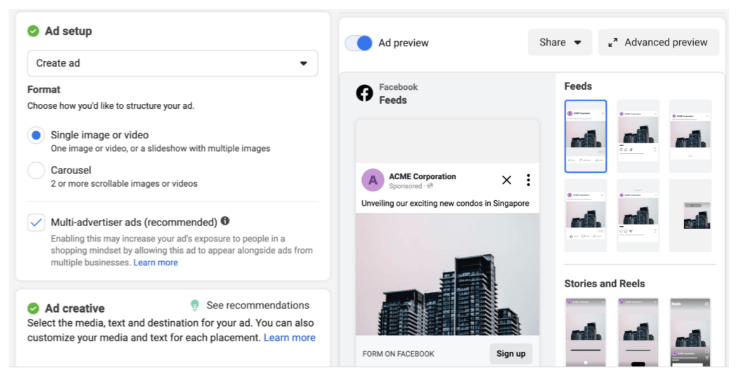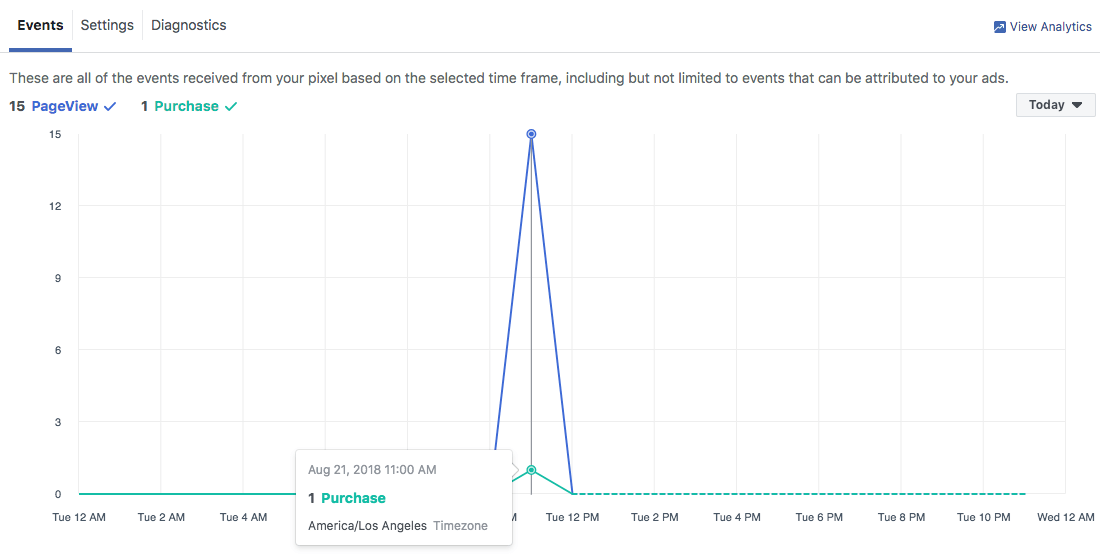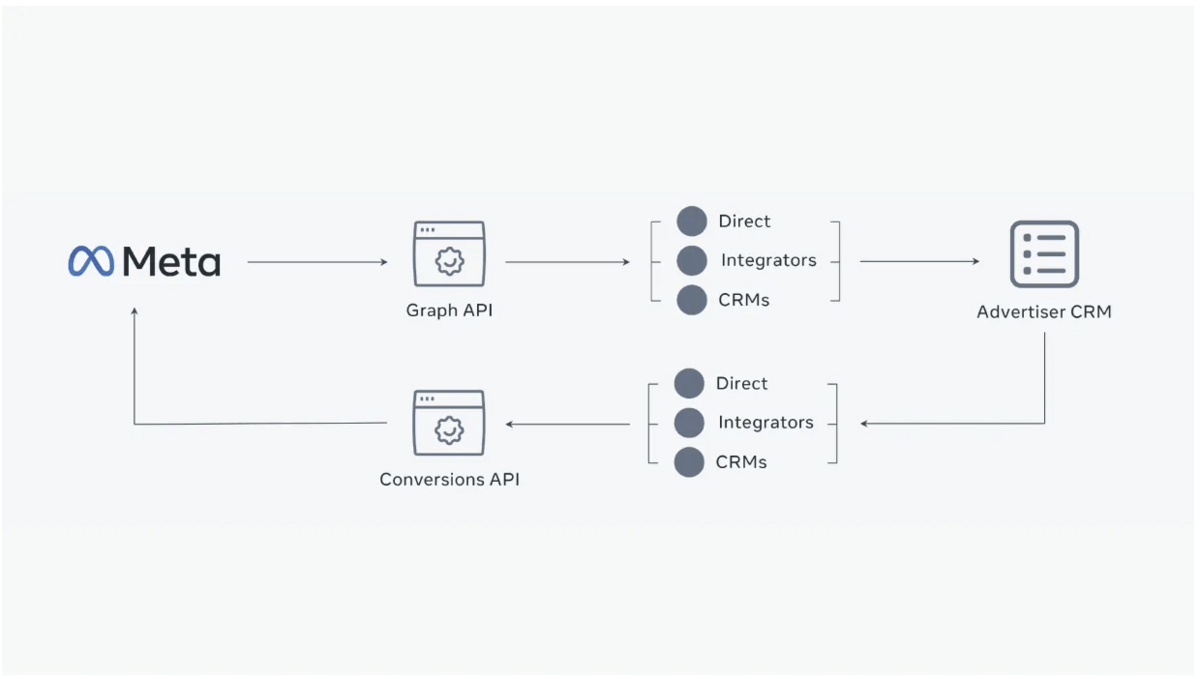
Have you put a lot of work into your blog, and it’s not getting the attention it deserves? You need to think outside the ‘platform.’ Using Facebook Ads is a great way to get more eyes on your WordPress blog and Facebook posts.
You’ve worked hard to create quality blog posts. So, it’s important to get rewarded for your efforts. But that is only possible by showing your blog articles to the right audiences. New blogs can be even more difficult since they often struggle with their Search Engine Results Page (SERP) rankings.
Promoting your blog posts on social media can be effective for lead generation. Tools like Facebook Ads can expose your content to a larger audience. All you have to do is capture the attention of potential readers who have yet to discover your work. This practice also helps establish your brand as an authority in your niche.
In this article, we’ll talk about how to use Facebook Ads to generate leads and draw traffic to your WordPress blog.
Effortlessly export your Google Docs to WordPress with just 1-click.
Get Started Today
Let’s explore why using Facebook for lead generation can increase your blog conversions. A growing blog relies on two factors: readership and interaction.
Facebook offers a plethora of tools. These features allow you to extend your content marketing reach to an already interested audience. All you must do is tune your ad’s focus on interests, demographics, and online behavior. This also increases conversion chances while helping you to build a loyal readership. Besides, Facebook offers new features like AI to help boost campaigns.

The next outstanding tool is Facebook’s Pixel. You can use it to track user behavior on your site once they click through from Facebook. This information shows how your content resonates with your target audience.
The Pixel insights also let you develop retargeting campaigns to re-engage readers. These people have shown an interest in your blog but still need to take specified steps. It could be subscribing to a newsletter or downloading a lead magnet.
Lastly, Facebook is all about numbers, and numbers never lie. This platform offers comprehensive data on how well your campaigns are doing.
You can monitor KPIs like CTR (click-through-rates), interaction and engagement, and conversion ratios. These insights enable you to maximize your strategy’s efficiency, ensuring your Facebook activities are consistent with your blog conversion objectives.

As explained in the HelloBar lead generation guide, social media platforms are a great platform to generate leads via different platforms such as Facebook for your business. Below is a recap of the advantages of lead generation using Facebook Ads.
How to use Facebook to generate leads for your WordPress blog? First, you must be mindful of some ground rules.
Creating a head-turning Facebook Ads campaign requires having:
We’re here to help you with the last one. Below are the top six strategies to increase your WordPress blog content engagement. Here, you’ll learn exactly how to use Facebook to generate leads.
Facebook Lead Ads is a potent lead-generation tool, thanks to its native conversions. Instead of redirecting users to another landing page, they can submit the form on the platform.
Before creating your own, check the Meta Ads Library to see what kinds of lead ads others in your niche are running — what visuals, offers, and copy actually convert. It’s a quick way to validate your direction before spending the budget.
As an advertiser, you can customize your form in this part to fit your demands. This way, you only gather data that matters to your business. Make sure your setup includes Facebook lead ads CRM integrations so new leads flow directly into your CRM or email automation system, allowing you to follow up instantly without manual exporting.

Also, your Lead Ads should have a clear and compelling value proposition. In this case, the value you offer is the information in your WordPress blog.
Always create your ads by keeping your buyer persona in mind. When ad copy and visuals resonate with your target audience, they’re much more likely to respond to your ad.
Remember to include a link to your WordPress blog’s privacy policy under your Lead Ads. You can also customize the ‘Thank You’ page and include a link.
How to use Facebook Ads to generate leads
A Facebook Conversion Ad is an ad that drives website conversions. These ads encourage your potential audience to interact with your post-click page.
Conversion Ads can prompt specific actions on your blog. These ads work better when combined with the Facebook Pixel. This integration enables precise targeting of qualified leads. These are users who are more likely to carry out the desired actions.
Once captured, effective lead routing ensures high-intent prospects are directed to the right sales teams or nurturing workflows for faster conversion.

It’s best to direct users who click on these ads to landing pages that mirror the ads’ message. Your aim here is to maintain a consistent messaging and user experience. You might even leverage UI UX design services to improve your brand’s visual identity and user experience. An optimized landing page should have a clear call to action. Also, a scannable information architecture will help improve your conversions.
How do you generate leads through Facebook Conversion Ads?
Retargeting is essential when using Facebook Ads to generate leads for your WordPress. You must have readers who have engaged with your blog or expressed interest in relevant content on Facebook. This strategy’s main goal is to reconnect with them.
This approach effectively reminds potential customers (or readers) about the value of your content. Think of it as a gentle nudge to encourage an audience group to revisit your blog.
You can also take it a step further by directing them to engage more. Encourage them to subscribe, read more articles, or join discussions.
The best way is to start with well-segmented Custom Audiences for retargeting campaigns. These audiences should include people who have already interacted with your blog. Then, customize the ad in a way that speaks to them.
You can also take advantage of Performance Max campaigns, which leverage Google’s AI to optimize your ads across all its platforms, including Search, Display, YouTube, and Discover. By using PMax, you can extend the reach of your retargeting efforts beyond custom audiences, allowing Google’s machine learning to identify high-intent users who are most likely to convert.
How to generate leads using Facebook retargeting campaigns
Facebook Conversion Leads Optimization are Facebook Leads Ads optimized for conversion.
You can select it during the campaign creation process. This improves your chance of getting qualified leads from your Facebook Ads. Facebook promotes your ads to the people most likely to convert, such as people who’ve shown interest in your content before.
Your users might perform tasks like signing up for your newsletter or grabbing a resource. Conversion leads let you keep tabs on these users by connecting this data to your Facebook Ads.
But first, you’ll need to set up your Facebook Conversions API and a running Lead Ads campaign.

Begin by identifying specific actions on your blog that signify user interest or engagement. Then, craft your ad campaign to address the interests and needs of your Custom Audiences. It’s important to highlight the value and relevance of your blog content by focusing on what has already resonated with them.
How can you generate leads using Facebook Conversion Leads?
Lookalike Audiences on Facebook is a great segmentation tool. They help locate future consumers who share your existing readers’ or followers’ characteristics. This targeting strategy is simple to implement, making it valuable for your marketing toolkit.
Lookalike Audiences help reach qualified users who haven’t discovered your WordPress site. Incorporating this method into your Facebook Ad campaigns helps expand your reach. Also, it helps cut down advertising costs and increase the odds of attracting new readers. It’s important to consider the size and details while developing Lookalike Audiences.
Another powerful tool to enhance your digital marketing strategy is the use of lightbox popups. These popups can be used to promote special offers, gather email subscriptions, or provide important announcements. These popups can be used to promote special offers, gather email subscriptions, or provide important announcements. Also, they work by dimming the background content and focusing the visitor’s attention on the popup itself, making it more likely for the visitor to engage.
Once again, your ad creatives should be interesting and suited to these new audiences. This practice also emphasizes the particular value your site delivers.
Once again, your ad creatives should be interesting and suited to these new audiences. This practice also emphasizes the particular value your site delivers.
How to generate leads using Facebook Lookalike Audiences
Integrating Facebook Ads with automated CRM tracking can be a game-changer. Bloggers can use it to boost their lead-generation strategy. Tools like LeadsBridge automate the transfer of lead information into your preferred CRM system.
This automation also removes the need for human data downloads and entries. When you automate your data sync, your team gets notified when a user responds to your Facebook Ad, and Facebook tracking helps monitor engagement and conversions in real-time.
These real-time integrations are essential. They help track your audience’s progress through sales funnels. All you have to do is create a seamless connection between Facebook and your favorite tool. Then, you can access reliable data for running follow-ups (outside your blog realm).

For marketers interested in automation, you can take campaign efficiency to the next level by exploring how to connect Facebook Ads to Claude using MCP for rapid, AI-enhanced ad insights.
LeadsBridge allows you to set up automated alerts for new leads, enabling instant connections with people at the peak of their interest. So that you can convert their interest into active readership.
Additionally, having automated email responses is integral to lead nurturing. A streamlined system puts your strategy on autopilot. For example, it can send a welcome email or give lead magnets like e-books or webinar access when a lead comes in.
How to use automation to boost lead generation on Facebook
Remember, each of these strategies calls for a holistic approach to work. From careful planning to execution and ongoing optimization and everything else. Review your ad performance data to refine your approach and help keep your campaigns aligned with your blog’s lead-generation goals.
We discussed using Facebook Ads to generate leads for your WordPress blog. But you can apply these strategies to other social media platforms and campaigns.
Keep in mind that you need to do your part as well. Your blog posts should deliver content that’s relevant to your target audience. Over time, a well-maintained collection of blogs is an excellent tool for driving traffic.
When will you get started?